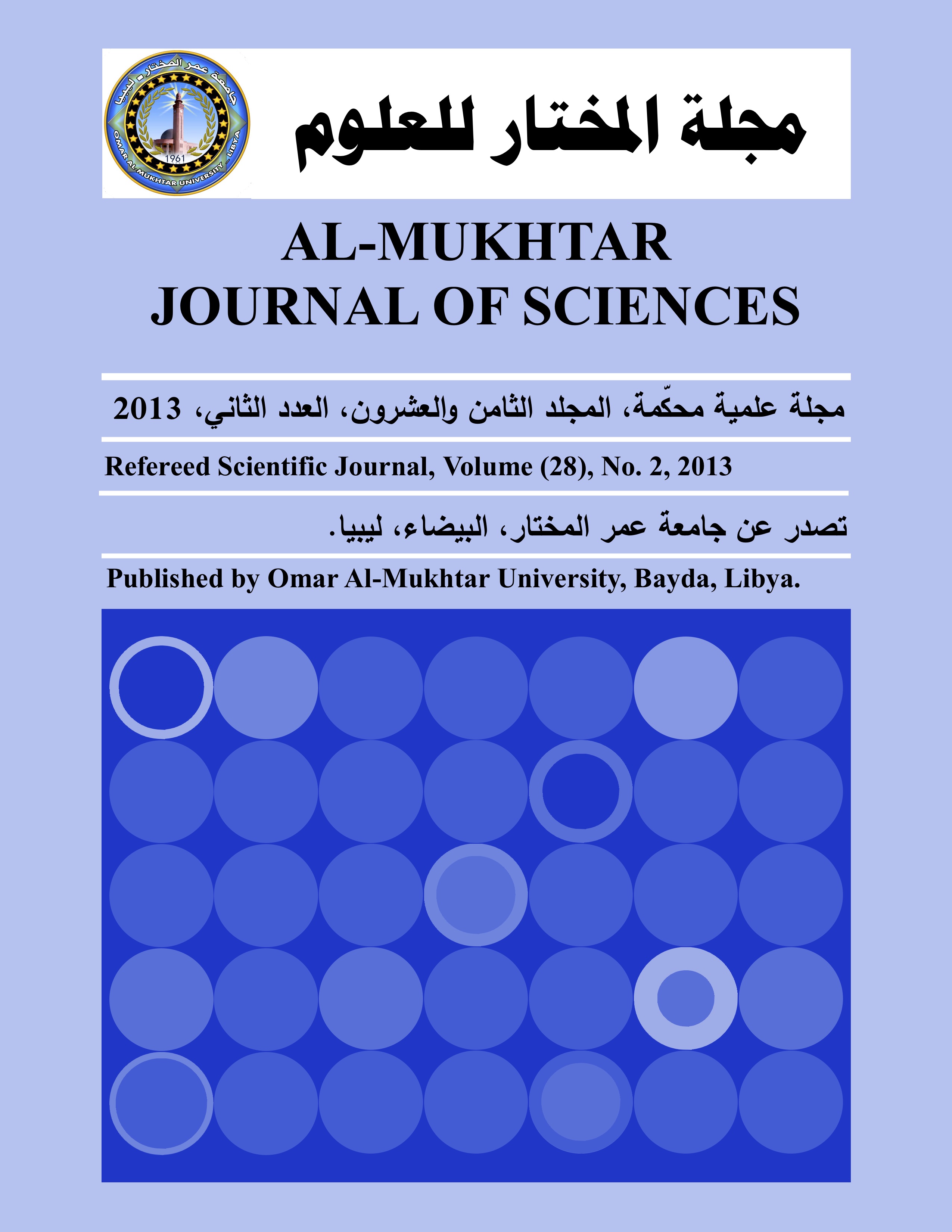Statistical analysis of the effect of machining parameters on the straightness error of high carbon steel turned components
DOI:
https://doi.org/10.54172/mjsc.v28i2.155Keywords:
Cutting speed, Straightness error, Feed rateAbstract
The objective of the present work is to study the effect of machining parameters on the straightness error of cylindrical parts of high carbon steel (SAE 1095) having hardness 210 BH produced in a lathe machine. The considered turning parameters that affect the straightness error are cutting speed ,feed rate and depth of cut at three levels for each parameter with two replicates of different length by diameter ratio for instance there are 3x3x3x2= 54 specimens to be machined. The straightness error are measured for each specimen and statistical analysis are carried out .The analysis of variance performed on the measured data shows that the cutting speed is the most significant factor affecting straightness error, secondly the feed rate and lastly the depth of cut. Also, the interaction cutting speed-depth of cut and cutting speed-feed rate-depth of cut affect the straightness error of the machined work piece too. The present work is provided with three dimensional surface graphs which show low straightness error at high cutting speed for each considered level of feed rate and depth of cut.
Downloads
References
Asilturk, I. (2011) On-line Surface Roughness Recognition System by Vibration Monitoring in CNC Turning Using Adaptive Neuro-fuzzy Inference System (ANFIS). International Journal of the Physical Sciences, 6, 22, 5353-5360.
Hayajneh, T., Montasser, M., Tahat, S. and Bluhm, T.B. (2007) A Study of the Effects of Machining Parameters on Surface Roughness in the End-Milling Process. Jordan Journal of mechanical and Industrial Engineering, 1, 1-5.
Kuzinovski, M., Trajčevski, N. and Cichosz, P. (2009) Investigation of Cutting Forces During Machining Process by High Speed Turning. Journal of Production Engineering, 12, 1, 29-32.
Miller, I. and Frennd, J.E. (1985) Probability and Statistics for Engineering. Probability_Hall inc. Englewood cliffs, 3rd Edition.
National Instruments (1999-2001) LabView 6.1 software.
Rafai, N.H. and Islam, M.N. (2010) Comparison of Dry and Flood Turning in Terms of Quality of Turned Parts. Proceedings of the World Congress on Engineering London,U.K, 3, 2044-2049.
Rico, I., Naranjo, A., Noriega, S., Martínez, E. and Vidal, L. (2010) Effect of Cutting Parameters on the Roundness of Cylindrical Bars Turned of 1018 Steel. International Conference on Industrial Engineering Theory, Applications and Practice, Mexico City, Mexico, 131-136.
Risa, A. (2011) Tool Life Performances, Wear Mechanisms and Surface Roughness Characteristics When Turning Austenised and Quenched AISI 5200 Bearing Steel With Ceramics and CBN/TiC Cutting Tools. Indian Journal of Engineering and Materials Sciences, 18, 2, 137-146.
Salles, J.L.C. and Gonçalves, M.T.T. (2003) Effects of Machining Parameters on Surface Quality of the Ultra High Molecular Weight Polyethylene (UHMWPE). Matéria, 8, 1, 1-10.
Shouman, M.A. and Bouzaeid, M. (2000) Design of an Experimental Approach for the Optimization of Some Form Errors. Alexandria Engineering journal, 39, 1, 51-63.
Talyrond 200, Annon (1984) Operators Handbook. Rank Taylor Hobson Ltd, 2nd edition.
Downloads
Published
How to Cite
License

This work is licensed under a Creative Commons Attribution-NonCommercial 4.0 International License.
Copyright of the articles Published by Almukhtar Journal of Science (MJSc) is retained by the author(s), who grant MJSc a license to publish the article. Authors also grant any third party the right to use the article freely as long as its integrity is maintained and its original authors and cite MJSc as original publisher. Also they accept the article remains published by MJSc website (except in occasion of a retraction of the article).










